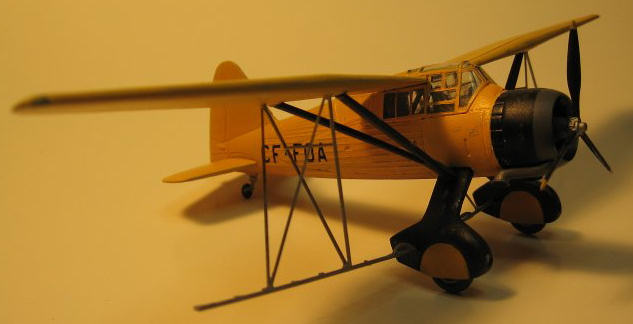
| KIT #: | PK-7 |
| PRICE: | $ cheap |
| DECALS: | Two options |
| REVIEWER: | Brian Baker |
| NOTES: | Easy and colorful conversion |

| HISTORY |

This
project actually started when I was trying to dig up some information on
Stearman 75 agricultural airplanes on the Canadian Civil Register.
My 1962 edition wasnít too extensive, and going through it to pick
out the 23 Stearmans on the register
at that time, plus three I had photographed that werenít listed, I came
across three
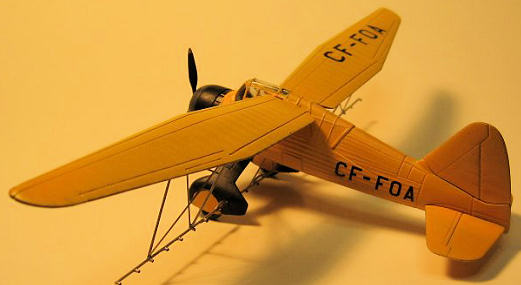 further,
and the story, I found, was rather interesting.
further,
and the story, I found, was rather interesting.
During the war, the Royal Canadian Air Force took delivery of 75 Mk. IIís
and 150 Mk.
The
prototype, CF-DGI-X, made its first flight on
 gplanes from the same period had engines no larger than 450
hp., and they carried a similar payload. At
the end of the year, Holmes sold the company to
gplanes from the same period had engines no larger than 450
hp., and they carried a similar payload. At
the end of the year, Holmes sold the company to
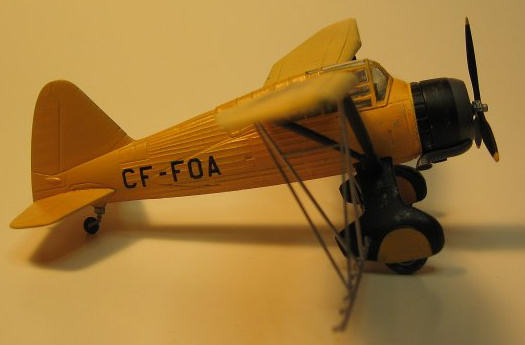 Research
Research
Through an agricultural aviation website hosted by noted aviation historian and author Bill Larkins, I contacted several people to see if I could get some information on these planes. I unearthed contemporary photos of dubious quality, but I had enough to get started. Since they were black and white pictures, I supposed that the planes would have been silver or light grey, but after some help by a Canadian contact, I came to the conclusion that the planes were most likely bright yellow, so yellow it was. The photos gave me an idea of the general layout of the airplanes, their color schemes, and the position of the spray bars. It was a simple conversion, and the planes were basically marked with black registrations in the standard position, along with black cowling and cowl flaps, landing gear covers, and wing struts. The spray booms and struts were probably left unpainted, so these became silver. I could not detect in the photos any wind-driven pump for the spray equipment, such as most sprayers have, so I assumed that this equipment was engine driven. I merely took a 1/72 scale three view and drew in the spray equipment to scale. After I finished the kit, I received a photo of CF-DGI-X, which confirmed the color and general arrangement.
| THE KIT |
| CONSTRUCTION |
I had
a couple of Matchbox Lysanders in my stash, do I decided on this for the
model. Assembly was standard,
except that I added a fuel tank in the rear cockpit taken from a Williams
Brothers Boeing 247, which included tanks for the long range version.
Other than that, and adding some details to the cockpit, the kit is
pretty much out of the box. I
painted the model disassembled,
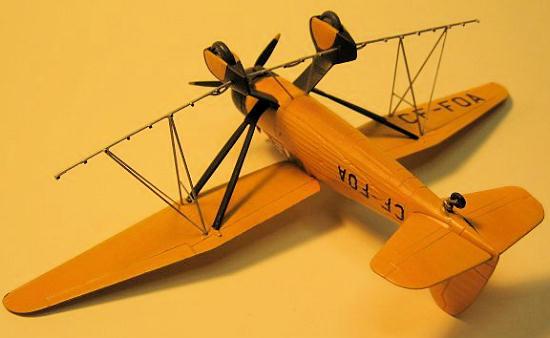 masking off the canopy.
The rear part of the canopy was painted over, so only the pilotís
windows and windshield were masked. I then attached the landing gear and
engine. After the decals were
applied, the wings and struts
were installed. The strut
attachment points need a little trimming or the dihedral angle will be too
high, but this is an easy kit to build, so I had no serious trouble.
masking off the canopy.
The rear part of the canopy was painted over, so only the pilotís
windows and windshield were masked. I then attached the landing gear and
engine. After the decals were
applied, the wings and struts
were installed. The strut
attachment points need a little trimming or the dihedral angle will be too
high, but this is an easy kit to build, so I had no serious trouble.
The
spray bars were the most delicate part of the process.
Before installation, I drilled out some holes where the bars attach
to the wheel pants, remembering to also provide for the center bar, which
goes underneath the belly of the plane.
I then began constructing the spray bars themselves,
adding eight spray nozzles on each side, and four in the center bar.
I marked off the position of the nozzles, and just superglued very
small pieces of plastic rod to one side, and trimmed them off to the correct
length when they were dry. The
main spray bars were then attached to the landing gear assemblies, and they
stuck into the units enough to form a pretty solid bond.
After they were set up, I measured off the length of the two V struts
on each side, and superglued them to the underside of the wing.
It was a trial and error process, but not a difficult one.
It probably took an hour to mount all three bars, and the airplane
was completed, except for minor trimming.
| COLORS & MARKINGS |
No information provided
| CONCLUSIONS |
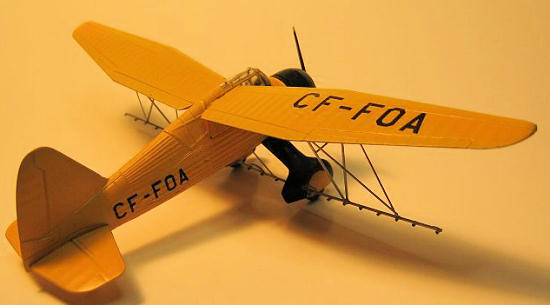 I think
that the effect of this model is all out or proportion to the amount of effort
involved. The airplane is extremely colorful, and depicts an airplane that is
rarely seen and that very few people know anything about.
I had heard of Lysanders used in agriculture, but until recently, I had
never seen a photo of one.
I think
that the effect of this model is all out or proportion to the amount of effort
involved. The airplane is extremely colorful, and depicts an airplane that is
rarely seen and that very few people know anything about.
I had heard of Lysanders used in agriculture, but until recently, I had
never seen a photo of one.
Agplanes have always interested me, and I regret the fact that I never got to fly one, but Iíve done a few models of them, and plan to do some more. Now Iím looking at photos of an Australian DeHavilland Tiger Moth sprayer used in the forties and fifties, registered VH-DDT. I canít pass that one up. This can get addicting.
March 2011
If you would like your product reviewed fairly and quickly, please contact me or see other details in the Note to Contributors.